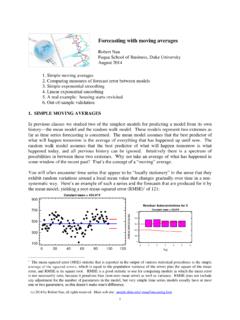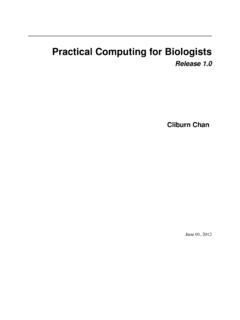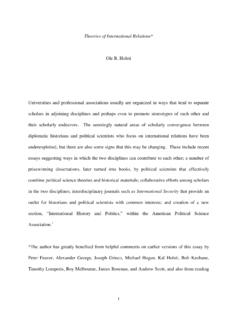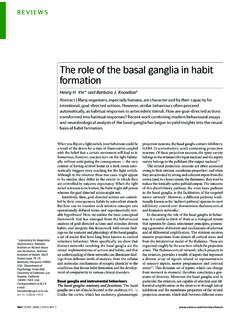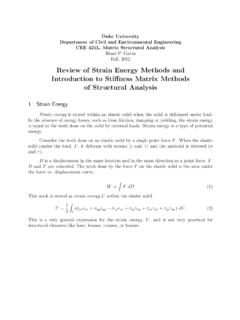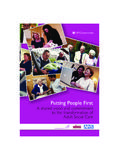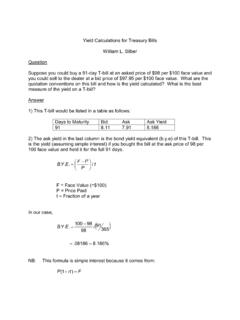Transcription of The Dishonesty of Honest People:A Theory of Self-Concept ...
1 NINA MAZAR, ON AMIR, and DAN ARIELY*. people like to think of themselves as Honest . However, Dishonesty pays and it often pays well. How do people resolve this tension? This research shows that people behave dishonestly enough to profit but honestly enough to delude themselves of their own integrity. A little bit of Dishonesty gives a taste of profit without spoiling a positive self-view. Two mechanisms allow for such Self-Concept maintenance: inattention to moral standards and categorization malleability. Six experiments support the authors' Theory of Self-Concept maintenance and offer practical applications for curbing Dishonesty in everyday life. Keywords: honesty, decision making, policy, self The Dishonesty of Honest people : A Theory of Self-Concept Maintenance It is almost impossible to open a newspaper or turn on a selfish human behavior ( , homo economicus) is the television without being exposed to a report of dishonest belief that people carry out dishonest acts consciously and behavior of one type or another.
2 To give a few examples, deliberatively by trading off the expected external benefits wardrobing the purchase, use, and then return of the and costs of the dishonest act (Allingham and Sandmo used clothing costs the retail industry an estimated 1972; Becker 1968). According to this perspective, people $16 billion annually (Speights and Hilinski 2005); the over- would consider three aspects as they pass a gas station: the all magnitude of fraud in the property and casualty expected amount of cash they stand to gain from robbing insurance industry is estimated to be 10% of total claims the place, the probability of being caught in the act, and the payments, or $24 billion annually (Accenture 2003); and magnitude of punishment if caught. On the basis of these the tax gap, or the difference between what the Internal inputs, people reach a decision that maximizes their inter- Revenue Service estimates taxpayers should pay and what ests.
3 Thus, according to this perspective, people are Honest they actually pay, exceeds $300 billion annually (more than or dishonest only to the extent that the planned trade-off 15% noncompliance rate; Herman 2005). If this evidence is favors a particular action (Hechter 1990; Lewicki 1984). In not disturbing enough, perhaps the largest contribution to addition to being central to economic Theory , this external Dishonesty comes from employee theft and fraud, which cost benefit view plays an important role in the Theory of has been estimated at $600 billion a year in the United crime and punishment, which forms the basis for most pol- States alone an amount almost twice the market capitali- icy measures aimed at preventing Dishonesty and guides zation of General Electric (Association of Certified Fraud punishments against those who exhibit dishonest behavior.)
4 Examiners 2006). In summary, this standard external cost benefit perspective generates three hypotheses as to the forces that are expected WHY ARE people (DIS) Honest ? to increase the frequency and magnitude of Dishonesty : Rooted in the philosophies of Thomas Hobbes, Adam higher magnitude of external rewards (Ext-H1), lower Smith, and the standard economic model of rational and probability of being caught (Ext-H2), and lower magnitude of punishment (Ext-H3). From a psychological perspective, and in addition to *Nina Mazar is Assistant Professor of Marketing, Joseph L. Rotman financial considerations, another set of important inputs to School of Management, University of Toronto (e-mail: ). On Amir is Assistant Professor of Marketing, Rady School of the decision whether to be Honest is based on internal Management, University of California, San Diego (e-mail: rewards.
5 Psychologists show that as part of socialization, edu). Dan Ariely is Visiting Professor of Marketing, Fuqua School of Busi- people internalize the norms and values of their society ness, Duke University (e-mail: The authors thank (Campbell 1964; Henrich et al. 2001), which serve as an Daniel Berger, Anat Bracha, Aimee Drolee, and Tiffany Kosolcharoen for internal benchmark against which a person compares his of their help in conducting the experiments, as well as Ricardo E. Paxson for his help in creating the matrices. Pierre Chandon served as associate editor her behavior. Compliance with the internal values system and Ziv Carmon served as guest editor for this article. provides positive rewards, whereas noncompliance leads to negative rewards ( , punishments). The most direct evi- 2008, American Marketing Association Journal of Marketing Research ISSN: 0022-2437 (print), 1547-7193 (electronic) 633 Vol.
6 XLV (December 2008), 633 644. 634 JOURNAL OF MARKETING RESEARCH, DECEMBER 2008. dence of the existence of such internal reward mechanisms they derive some financial benefit from behaving dishon- comes from brain imaging studies that reveal that acts estly but still maintain their positive Self-Concept in terms based on social norms, such as altruistic punishment or of being Honest . To be more precise, we posit a magnitude social cooperation (De Quervain et al. 2004; Rilling et al. range of Dishonesty within which people can cheat, but 2002), activate the same primary reward centers in the brain their behaviors, which they would usually consider dishon- ( , nucleus accumbens and caudate nucleus) as external est, do not bear negatively on their Self-Concept ( , they benefits, such as preferred food, drink, and monetary gains are not forced to update their Self-Concept ).
7 1 Although (Knutson et al. 2001; O'Doherty et al. 2002). many mechanisms may allow people to find such a compro- Applied to the context of (dis)honesty, we propose that mise, we focus on two particular means: categorization and one major way the internal reward system exerts control attention devoted to one's own moral standards. Using these over behavior is by influencing people 's Self-Concept that mechanisms, people can record their actions ( , I am is, the way people view and perceive themselves (Aronson claiming $x in tax exemptions ) without confronting the 1969; Baumeister 1998; Bem 1972). Indeed, it has been moral meaning of their actions ( , I am dishonest ). We shown that people typically value honesty ( , honesty is focus on these two mechanisms because they support the part of their internal reward system), that they have strong role of the Self-Concept in decisions about honesty and beliefs in their own morality, and that they want to maintain because we believe that they have a wide set of important this aspect of their Self-Concept (Greenwald 1980; Griffin applications in the marketplace.)
8 Although not always mutu- and Ross 1991; Josephson Institute of Ethics 2006; Sani- ally exclusive, we elaborate on each separately. tioso, Kunda, and Fong 1990). This means that if a person fails to comply with his or her internal standards for hon- Categorization esty, he or she will need to negatively update his or her self- We hypothesize that for certain types of actions and mag- concept, which is aversive. Conversely, if a person complies nitudes of Dishonesty , people can categorize their actions with his or her internal standards, he or she avoids such into more compatible terms and find rationalizations for negative updating and maintains his or her positive self- their actions. As a consequence, people can cheat while view in terms of being an Honest person. Notably, this avoiding any negative self-signals that might affect their perspective suggests that to maintain their positive self- Self-Concept and thus avoid negatively updating their self- concepts, people will comply with their internal standards concept altogether (Gur and Sackeim 1979).
9 Even when doing so involves investments of effort or sacri- Two important aspects of categorization are its relative ficing financial gains ( , Aronson and Carlsmith 1962; malleability and its limit. First, behaviors with malleable Harris, Mussen, and Rutherford 1976; Sullivan 1953). In categorization are those that allow people to reinterpret our gas station example, this perspective suggests that them in a self-serving manner, and the degree of malleabil- people who pass by a gas station will be influenced not ity is likely to be determined by their context. For example, only by the expected amount of cash they stand to gain intuition suggests that it is easier to steal a $.10 pencil from from robbing the place, the probability of being caught, and a friend than to steal $.10 out of the friend's wallet to buy a the magnitude of punishment if caught but also by the way pencil because the former scenario offers more possibilities the act of robbing the store might make them perceive to categorize the action in terms that are compatible with themselves.
10 Friendship ( , my friend took a pencil from me once; this The utility derived from behaving in line with the self- is what friends do). This thought experiment suggests not concept could conceivably be just another part of the cost only that a higher degree of categorization malleability benefit analysis ( , adding another variable to account for facilitates Dishonesty (stealing) but also that some actions this utility). However, even if we consider this utility just are inherently less malleable and therefore cannot be cate- another input, it probably cannot be manifested as a simple gorized successfully in compatible terms (Dana, Weber, and constant, because the influence of dishonest behavior on the Kuang 2005; for a discussion of the idea that a medium, Self-Concept will most likely depend on the particular such as a pen, can disguise the final outcome of an action, action, its symbolic value, its context, and its plasticity.)
